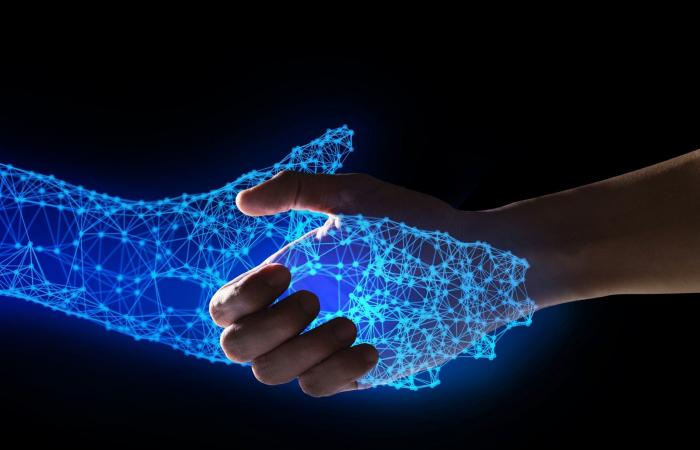Scientists have used seismic waves to create a universal scale for the sense of touch that paves the way for hyper-realistic virtual reality.
The “Universal Law of Touch” theory was developed by researchers at Birmingham University who used the mathematical modeling of touch receptors in humans and other animal species.
“Touch is a primordial sense that is just as important to our ancient ancestors as it is to modern mammals, but also one of the most complex and therefore the least understood,” said Dr. Tom Montenegro-Johnson from the University of Birmingham’s School of Mathematics. who directed the research.
“For example, while we have universal laws to explain seeing and hearing, it is the first time that we can explain touch in this way.”
The team of Dr. Montenegro-Johnson studied a type of seismic wave known as Rayleigh waves, which are created by the impact of two objects.
By using earthquake math to model how vibrations move through the skin, the team discovered that vibrational receptors under the skin respond the same way to Rayleigh waves, regardless of age, gender, or even species.
“The principles we have defined allow us to better understand the different touch experiences of a wide variety of species,” said co-author James Andrews.
“For example, if you indent the skin of a rhinoceros by 5 mm, it feels the same as a human with a similar indentation. The forces required to create the notch are just different. ”
The universal law was described in a study published in the journal Scientific advances.
The researchers at the University of Birmingham are part of the European consortium H-Reality, which is already using the theory to develop next-generation VR technologies.
The aim of the group is to “give virtual objects a physical presence and create a revolutionary, disconnected, virtual-haptic reality”.
It is one of several efforts to create digital worlds that feel indistinguishable from reality. Bristol-based startup Ultraleap develops haptic feedback hardware that can simulate virtual touch.
Applications range from video games and chat rooms to remote operations and industrial facilities that allow employees to remotely control dangerous machines.
The most ambitious application, however, is creating virtual reality worlds that feel as realistic as the real world.
The advent of such technologies has helped fuel the debate about humanity’s perception and current understanding of reality.
Theoretical physicists and philosophers have suggested that we live in a matrix-style computer simulation, citing the pace of technological advancement and the rapid pace of improvement in video games.
One of the most vocal proponents of this simulation theory is Elon Musk, who claimed in 2016 that the universe we live in has a 99.99 percent chance of being a computer simulation.
“Forty years ago we had pong – two rectangles and a point. Now we have photorealistic 3D simulations with millions of people playing at the same time, and it’s getting better every year, “said the head of Tesla, SpaceX and Neuralink.
“If you assume an improvement rate at all, the games will no longer be indistinguishable from reality, just not anymore.”
A 2017 research report seemed to dispel this idea after researchers at Oxford University calculated that storing the data for such a simulation on a classic computer would require “a memory made up of more atoms than in the universe”.
The research did not rule out that large-scale simulations could potentially be supported by ultra-powerful quantum computers.
These were the details of the news The ‘universal law of touch’ could help make VR indistinguishable from... for this day. We hope that we have succeeded by giving you the full details and information. To follow all our news, you can subscribe to the alerts system or to one of our different systems to provide you with all that is new.
It is also worth noting that the original news has been published and is available at de24.news and the editorial team at AlKhaleej Today has confirmed it and it has been modified, and it may have been completely transferred or quoted from it and you can read and follow this news from its main source.

